In previous articles, we’ve discussed which finches are best for beginners and which finches are extremely rare and challenging, but we’ve never talked about the finches in between. These are finches that aren’t especially difficult to keep and breed, but require a few years of experience with the easier species before being attempted.
What makes a finch intermediate difficulty?
Specific housing requirements
An intermediate finch may be territorial or overtly aggressive against some other finches, requiring careful consideration of which species are included in the aviary. They may be hostile towards their own young, therefore requiring a second aviary to allow separation.
Live food requirement
An intermediate finch doesn’t require livefood (such as mealworms and maggots) to survive, but will not achieve optimal breeding results without it.
Noteworthy replacement cost
Finches worth between $75 and $200 a pair will be considered “intermediate” for the purposes of this article.
Intermediate Finch Species
These are in no particular order of difficulty.
Melba Finch (green-winged pytilia)
Melba finches have all the attributes of an intermediate finch: They’re difficult to find, they’re worth a couple of hundred dollars a pair, they require livefood throughout the year, and they have very specific aggression issues. Male melba finches will attack any other finch that has a red face, such as star finches and red-faced parrotfinches. Read the full species profile.
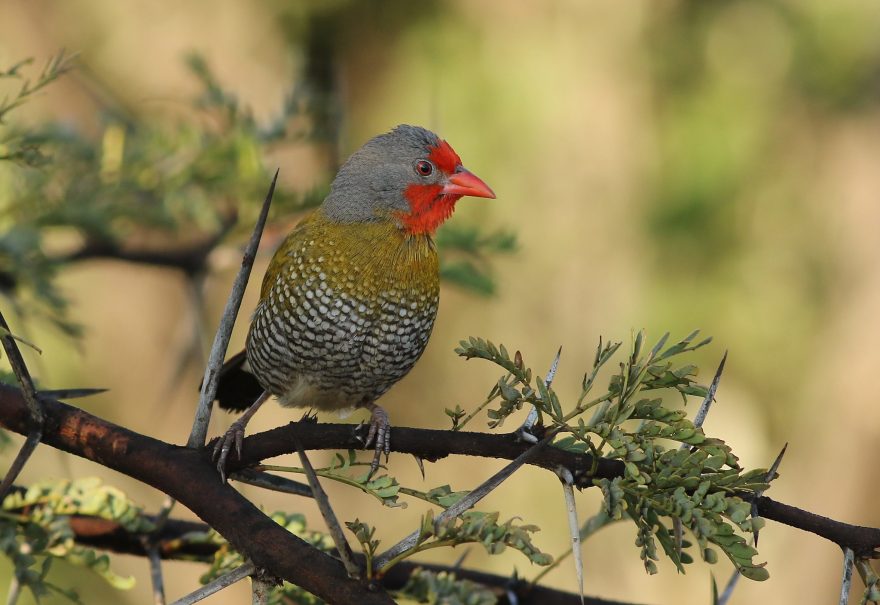
Red Strawberry Finch
These striking little finches do very well in a mixed collection. They’re a little bit fragile, so don’t house them with anything overly boisterous or aggressive. Like most species on this list, strawberry finches require year-round access to livefood and extra in the breeding season. Despite being challenging to acquire, once you’ve got their housing and feeding requirements just right they will breed readily and consistently.
Read the full species profile.
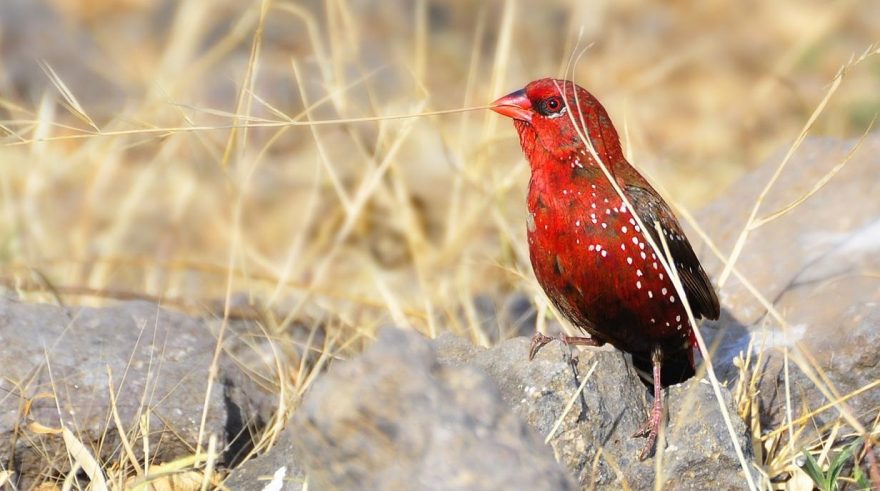
Jacarini Finch
Jacarini finches are not actually finches. They’re a member of the tanager family and have behaviour and care requirements that are slightly different to any beginner finch you may have kept.
For starters, you’ll need to level up your aviary before getting a pair of Jacarinis. They prefer a large aviary with dense plants or brush to feel most at home.
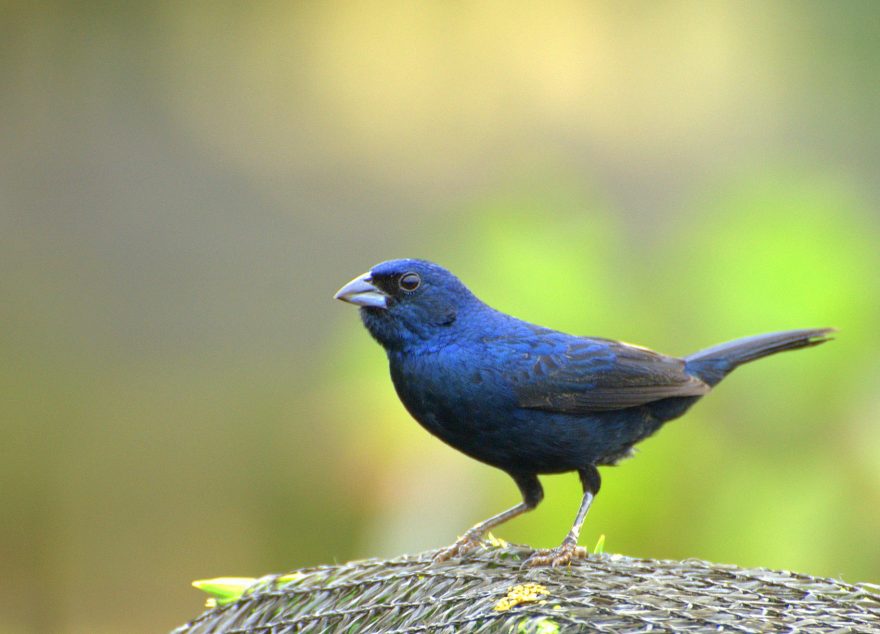
You’ll also need to deal with a little bit of aggression from the male jacarini. He’ll get quite territorial of the space around his nest during the breeding season, so ensuring the aviary large and sparsely populated is a essential. He may also attack any other male jacarini finch—including his own young—and Cuban finches for some inexplicable reason.
Finally, you’ll need to supply a decent amount of livefood throughout the year and increase the amount offered when breeding.
Read the full species profile.
Diamond Firetail Finch
The most frustrating thing about Diamond Firetail finches is that they require a permit to keep in most (if not all) Australian states and territories. Once you get over that hurdle, they’re actually not too difficult to keep.
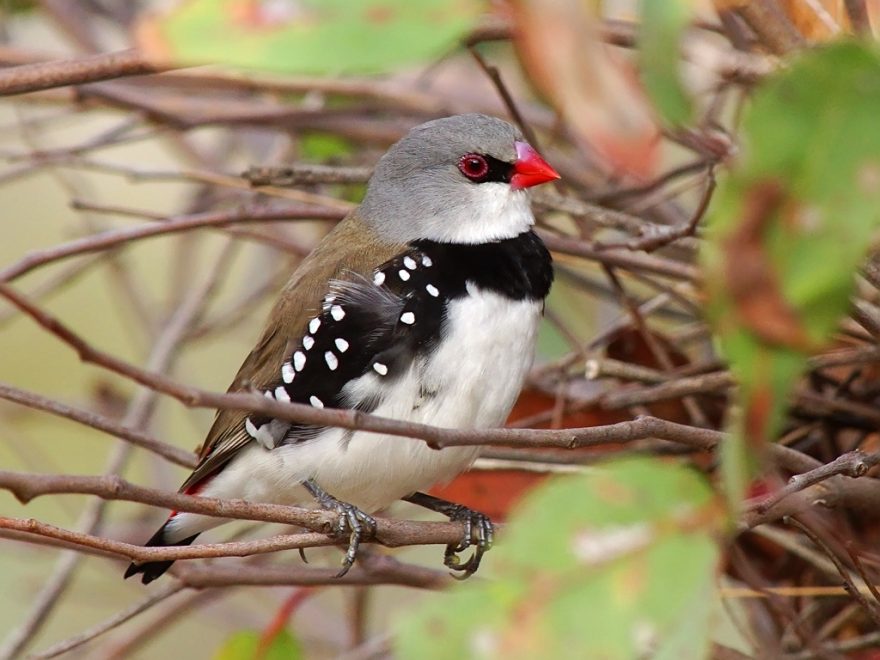
Like most finches in this list, they require a steady supply of livefood to thrive, and usually won’t breed without it. They’re also a bit pushy and assertive. Perhaps not enough to characterize them as “aggressive”, but enough that you should avoid keeping smaller and more fragile finches in the same aviary.
Sexing diamond firetail finches is also a bit of a hassle. There are some tricks you can use to guess correctly more often than note, but true accuracy requires DNA sexing.
Read the full species profile.
Cut-throat Finch
Cut-throat finches are a really easy finch to keep and breed once you get their housing and feeding right. They need a steady supply of livefood during the breeding season, but aren’t too fussy about what insects you offer and usually won’t abandon nests if you forget to feed them for a day.
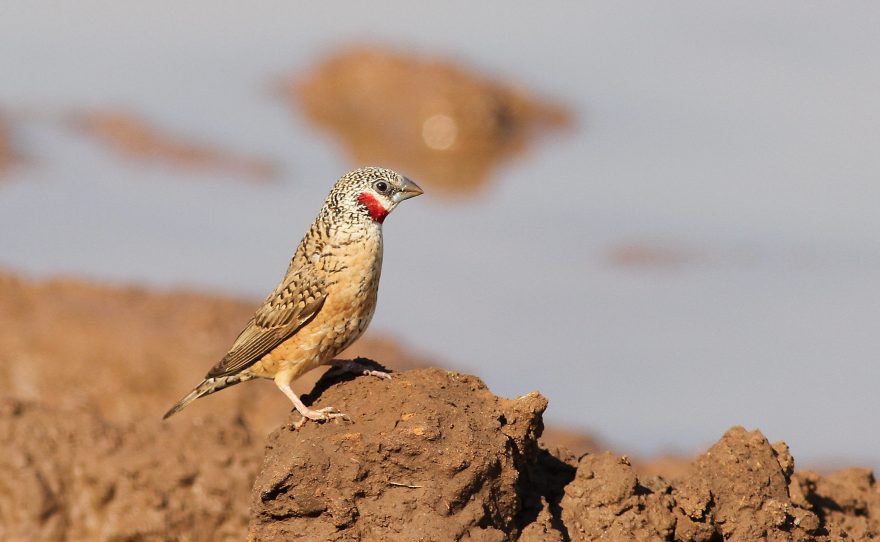
The aggression level between individual cut-throat finches can vary quite significantly. Some truly live up to their name, while others could be kept with almost any placid finch. Keep them in a large sparsely populated aviary with no finches smaller than them and you’ll rarely have problems.
Read the full species profile.
St Helena Waxbill
If it wasn’t for their modest livefood requirement, St Helena waxbills would almost be considered a beginner species. They’ll protect the entrance to their nest, but that’s about the extent of their aggressive tendencies.
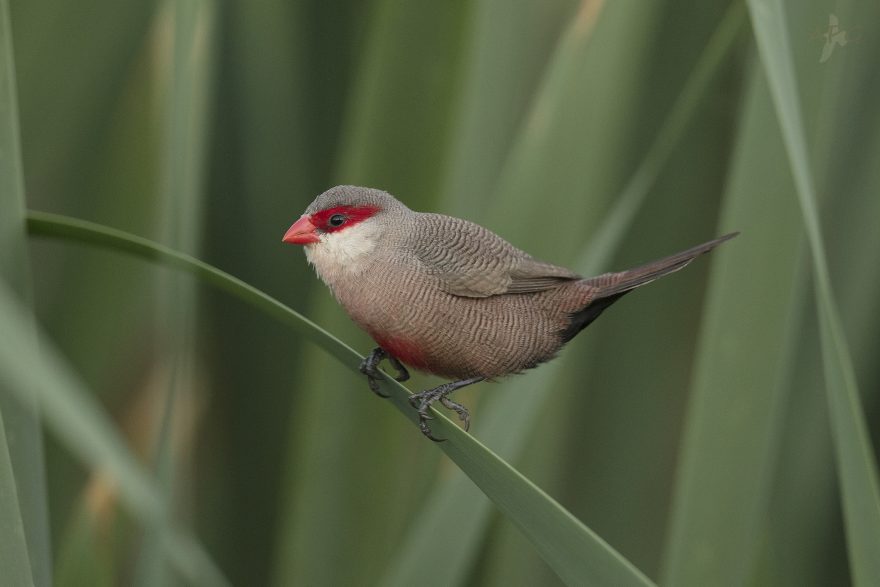
In a smaller aviary, they can be a little bit annoying to the other birds. They’re very active and inquisitive, constantly zipping around the aviary at high speeds. Given that they prefer more “natural” nest sites, they’re a species that really demands a larger planted aviary. Once the housing is right, they can be kept with virtually any small and gentle finch species.
Those successfully keeping and breeding St Helena Waxbills will eventually be able to move onto one of the most interesting advanced species in aviculture—the pin-tailed whydah. The whydahs are a parasitic species that deposit their eggs into active St Helena nests, which then raise the whydah chicks as if they were their own.
Read the full species profile.
Red-Cheeked Cordon Bleu Waxbill
Red-cheeked cordons bleu waxbills are the most commonly kept finch on this list, and might be even be considered a beginner-friendly species by some. They’re not at all aggressive, but their fondness for livefood warrants their inclusion into the “intermediate” finch category.
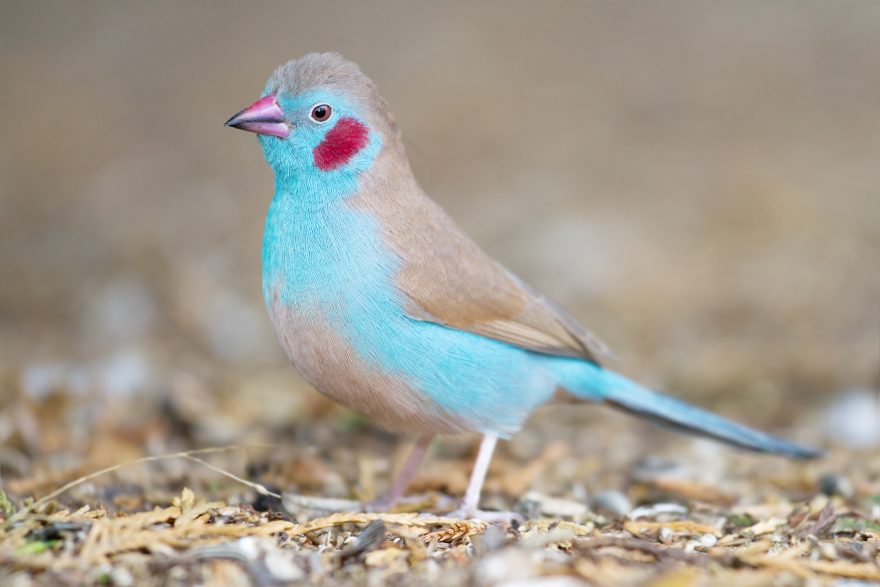
Keeping red-cheeked cordons can be quite frustrating: The hens are unusually prone to egg binding, and nest abandonment can happen very easily.
Making them feel safe and secure is essential to preventing nest abandonment. A large aviary with thick plantings and/or brush will make it much easier to achieve success, as they were generally breed well when they feel “hidden”.
Read the full species profile.
Tricoloured Parrotfinch
There are three parrotfinch species established in Australia, and the tricoloured is by the far the least commonly kept among them.
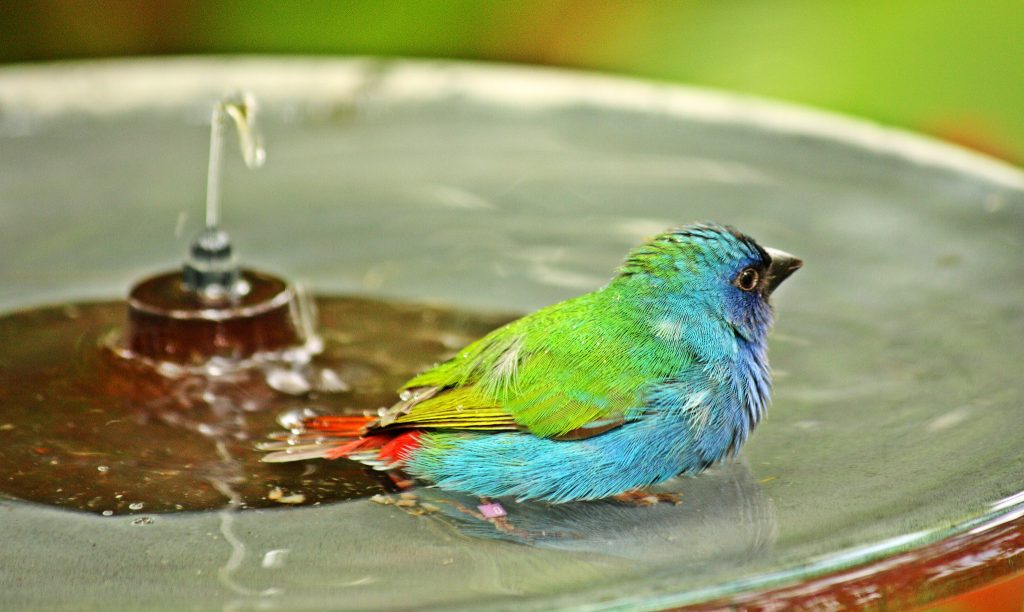
Tricoloureds are a fairly placid species that should cause no issue in a mixed collection, however there are anecdotes floating around suggesting they cause trouble when housed with Gouldian finches.
Although they do best with a bit of livefood in their diet, they can be sometimes be bred on just seed and greens.
So if they’re a placid “seed and water” species, why are they in this list? It’s a weird answer: Because they get fat. If left unchecked, their voracious appetites will have them eat until they’re the size of tennis balls.
They need to have a large aviary so that they can get enough exercise, and the amount of fatty food (oilseeds, soft foods, livefood) offered needs to be strictly controlled.
Finally, tricoloured parrotfinches are most active at dusk and sunrise; which can be annoying to other birds in the aviary that are just trying to get some sleep.
Read the full species profile.
Want to learn more about finches? Check out our sister site Aussie Finch Forum, where thousands of finch breeding come together to refine their finch keeping skills.